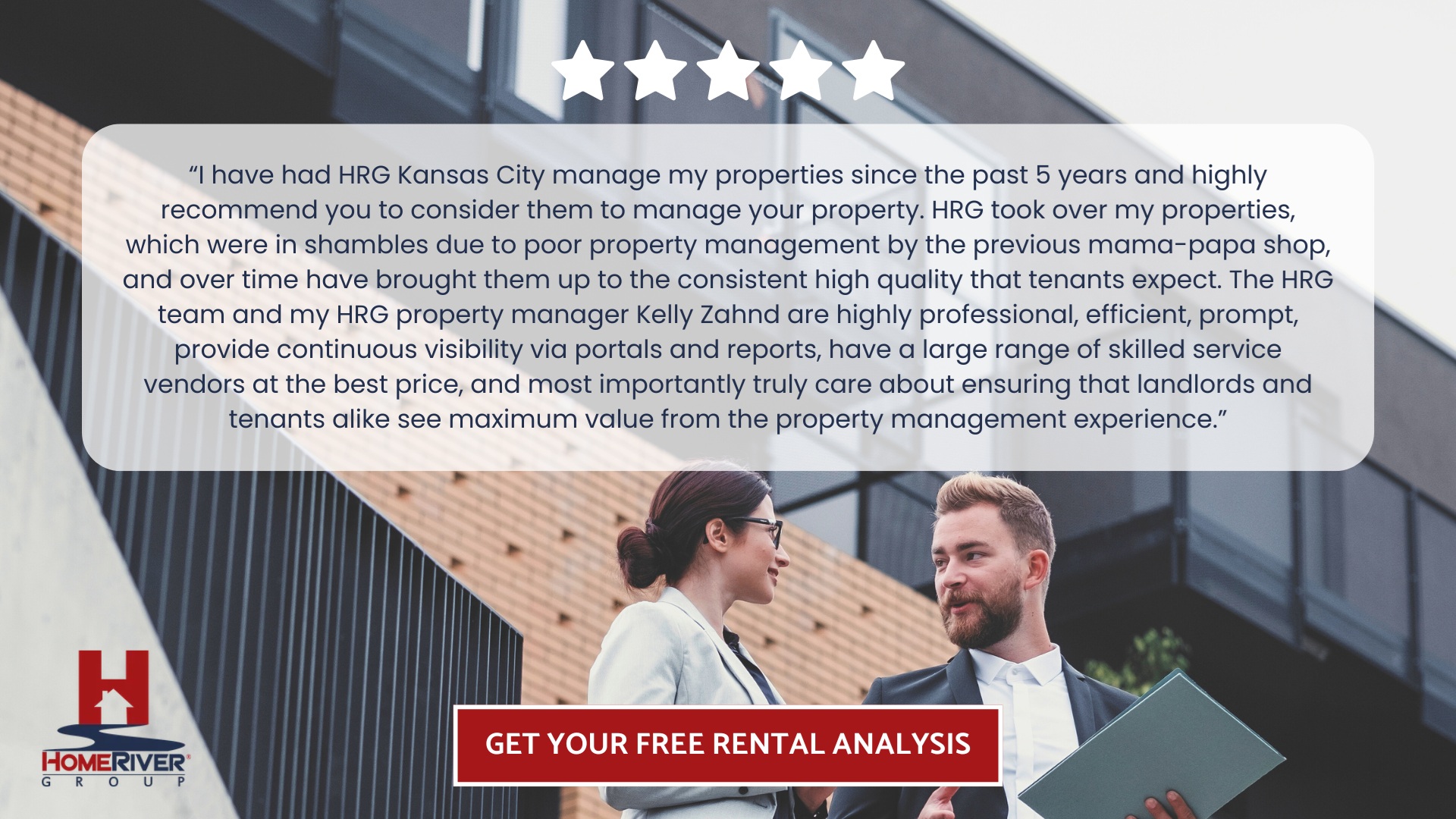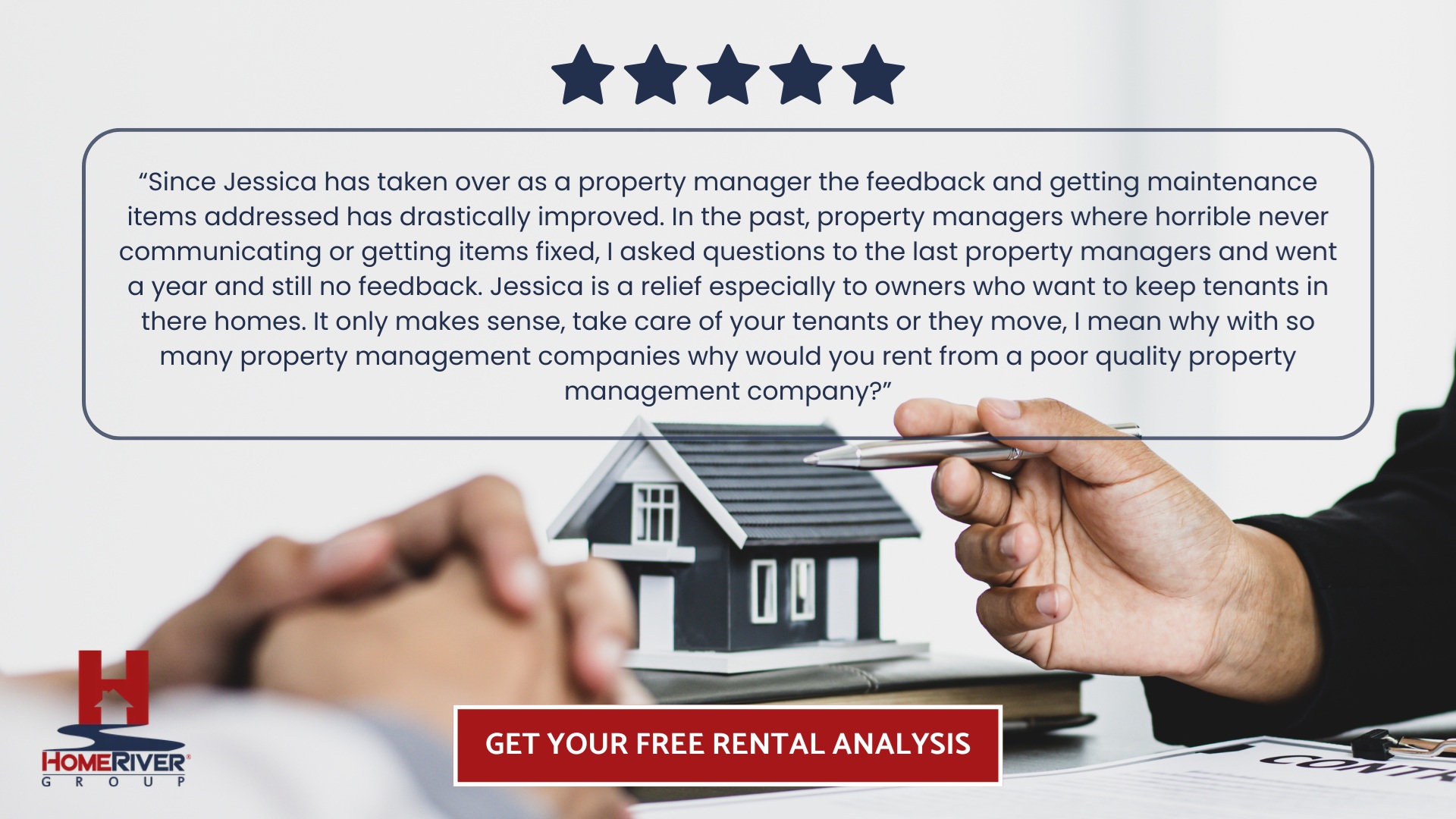
HomeRiver Group is a nationwide leader in residential property management, trusted by thousands of landlords across 32+ states. Our expert teams combine local insight with streamlined systems to deliver dependable service, reduced vacancy, and maximized returns. We handle the day-to-day, from leasing to maintenance, so our clients can focus on growth. With HomeRiver Group, you enhance your investment strategy with confidence and clarity.
If you're a landlord or real estate investor, knowing how to evaluate potential returns is essential, and that’s where ARV comes in. Short for After Repair Value, ARV helps estimate what a property will be worth after renovations are complete. Whether you're flipping or holding, this metric plays a significant role in deciding if a deal is worth pursuing. Understanding ARV can give you a sharper edge in competitive markets.
This blog will explore how ARV is calculated, why it matters in shaping investment decisions, and how landlords and investors can use it to assess profitability, secure financing, and reduce risk in real estate deals.
Why Is ARV Important For Landlords And Investors?
Understanding After-Repair Value (ARV) is pivotal for maximizing real estate returns. ARV gives a reliable estimate of a property's worth after renovations, repairs, or improvements. This projection plays a vital role in shaping investment decisions.
Evaluating Investment Potential Before Purchase
ARV is central to determining a property’s potential profitability. Before making an offer, you want to ensure that the numbers will work in your favor once the necessary upgrades are made. Knowing the ARV allows you to work backward, factoring in the purchase price, renovation costs, and other expenses, to see if your investment will yield a desirable return.
ARV’s Role In Securing Financing
ARV sets the stage for financing. Lenders often look at ARV when deciding how much money to provide for renovation loans. The higher the ARV, the more favorable your chances are of securing larger loan amounts, allowing you to complete more comprehensive improvements.
Managing Risk Through Clear Valuation
ARV is a risk management tool. By analyzing ARV, you can identify potential pitfalls, such as overpaying for a property or underestimating the cost of repairs. With a clear ARV, you can make informed decisions and set realistic resale or rental value expectations.
Planning For Short- And Long-Term Growth
Finally, ARV supports strategic planning. It helps you map out renovation budgets, forecast future cash flow, and time your exit strategies. For landlords and investors, this means having an actionable plan aligning with short-term gains and long-term growth. If you’re weighing your options between direct ownership and more passive investing, understanding ARV also helps clarify REIT vs rental property what’s the better real estate investment, as it highlights the control and value-add potential unique to physical real estate.
ARV Calculation Example: A Step-by-Step Guide
When evaluating investment opportunities, understanding how to calculate ARV (After Repair Value) is essential. Here’s a clear, step-by-step walkthrough you can use to estimate the ARV of a property:
Step 1: Research Comparable Properties (Comps)
Start by finding properties in the same area with similar features—bedrooms, bathrooms, square footage, lot size, and overall condition. Ensure these properties have recently sold, ideally within the last three to six months.
Step 2: Analyze Sale Prices
List the sale prices of three to five relevant comps. Let’s say, for example, you identify three similar homes that sold for 380,000,380,000, 380,000,400,000, and $410,000.
Step 3: Calculate The Average
Average the sale prices of the selected comps to get an initial benchmark. If your selected comps sold for $380,000, $400,000, and $410,000, your calculation would look like this:
($380,000 + $400,000 + $410,000) ÷ 3 = $396,667
This gives you a reliable average based on real market data, which you’ll refine further in the next steps.
Step 4: Adjust For Differences
Not every home is identical. Account for upgrades, renovations, or any amenities your target property might have compared to the comps. Adjust your figure upward if your property will have a newly renovated kitchen or an extra bathroom. Conversely, if it lacks features present in the comps, adjust downward.
Step 5: Determine Your ARV
Once you’ve made the necessary adjustments, you have your ARV, the estimated market value of the property, after all repairs and upgrades have been completed. This figure guides your decisions on purchase price, renovation budget, and potential return on investment.
Whether flipping a property or preparing to rent it out, ARV gives you a clear snapshot of its future value. For homeowners exploring how to make money from their home, understanding ARV can also open doors to refinancing, short-term rental income, or smart renovation strategies that boost resale potential. By using this systematic approach, you’re better equipped to make wise decisions and secure properties that offer strong potential for growth.
Using Comparable Properties To Estimate ARV
To accurately estimate a property's After Repair Value (ARV), you must anchor your number in real market data. This is where comparable properties, or "comps," come in. By analyzing recently sold homes in the same neighborhood, you can zero in on what buyers pay for similar properties after rehabilitation.
Identifying The Right Comps
Identify three to five properties that closely match yours in size, age, condition, and amenities. These properties should have closed within the last three to six months, ideally within a half-mile radius. Consider factors like square footage, lot size, number of bedrooms and bathrooms, and any upgrades or renovations.
Analyzing Differences And Adjusting Value
Once you have your list, dive into the details. How do the finishes compare? Did the comps have new kitchens, updated bathrooms, or energy-efficient windows? Adjust your estimated ARV up or down based on these differences. For instance, if a comp sold for $400,000 with a brand-new roof and you plan similar improvements, your projected ARV can align closely. Conversely, if your property lacks key features that a comp offered, adjust accordingly.
Considering Neighborhood And Market Influences
Digging into comps is about context. Neighborhood trends, school district reputation, and even planned infrastructure projects can influence value. Grounding your ARV estimate in hard evidence drawn from comparable sales helps reduce guesswork and allows for more strategic planning.
Factoring In Investment Metrics
In addition to comparing sales prices, savvy investors often ask, what is a good cap rate for rental property in the area. Understanding the typical capitalization rate helps you assess whether your projected ARV will translate into a profitable return. Aligning ARV with rental income potential ensures your purchase meets both equity growth and cash flow goals.
ARV And Its Role In Property Flipping
Understanding After Repair Value (ARV) can make or break your success in property flipping. ARV represents the estimated market value of a property after all necessary repairs and renovations have been completed. As an investor, your ability to forecast this number impacts every decision, from your initial offer to the scope of your renovations.
Using ARV To Inform Your Investment Strategy
When evaluating a potential flip, you’ll use ARV to set the ceiling for how much you should invest in the purchase and rehab. It’s critical to look at comparable properties in the area—the so-called “comps.” Review recent sales data, focusing on homes with similar features and square footage, and adjust your estimate based on factors like location, amenities, and quality of upgrades.
Applying The 70% Rule For Profit Protection
Accurate ARV calculations mean you can confidently apply the well-known 70% rule, aiming to pay no more than 70% of the ARV minus repair costs. This gives you a buffer for profit and unforeseen expenses. Without a realistic ARV, you risk overpaying or sinking too much money into renovations, shrinking your potential returns.
Timing, Execution, And Market Strategy
In the fast-paced world of property flipping, time is money. The precision of your ARV guides not only your buy-in price but also your go-to-market strategy. A well-grounded ARV allows you to move quickly, manage risk, and maximize profit potential.
Location-Specific Advantage
Choosing the right location can enhance the effectiveness of your ARV strategy. For instance, the best place to buy investment property in Texas often combines high resale potential with steady buyer demand and accessible renovation costs. In hot markets like San Antonio, Dallas, or Austin suburbs, knowing your ARV helps you compete with confidence and unlock more substantial margins.
Risks And Limitations Of ARV Calculations
While ARV, or After Repair Value, is an essential metric for evaluating potential real estate investments, relying too heavily on these calculations can expose you to significant risks.
Market Volatility Impacts Returns: ARV estimates are based on current market trends, but property values can fluctuate unexpectedly. Sudden shifts in buyer demand, interest rate changes, or local economic downturns can drastically reduce your anticipated resale or rental income, making your original ARV overly optimistic.
Unpredictable Renovation Costs: Many ARV calculations assume renovations will go according to plan. In reality, costs can rise due to supply chain issues, labor shortages, or hidden structural problems. These unforeseen expenses can significantly erode your profit margin and delay your project timeline.
Inaccurate Comparable Sales: Using comps that don’t closely match the target property’s location, condition, or size can lead to inflated or misleading ARV estimates. Appraisers may interpret data inconsistently, especially in areas with low sales volume or atypical upgrades.
Overlooking Soft Costs: ARV focuses solely on post-renovation value but ignores transaction fees, property taxes, and closing costs. These additional expenses can substantially reduce your net return, especially in slower-moving markets where homes take longer to sell.
Vacancy & Holding Risks: Properties don’t always sell or rent immediately after renovations. Prolonged vacancy periods increase holding costs such as insurance, utilities, and loan interest. A solid ARV must be paired with realistic expectations around time on market.
Limited Insight Into Buyer Behavior: ARV doesn’t account for how the market will actually respond to your finished product. Renovations that look good on paper may not translate to higher offers if buyer preferences shift or your upgrades don’t align with local expectations.
Location-Driven Discrepancies: Where you invest plays a critical role in how reliable ARV turns out to be. The best place to buy a house in Florida for investment, such as parts of Tampa or Cape Coral, often reflects areas with steady demand and consistent comps—reducing the margin for error in your projections.
Lack Of Built-In Safety Margins: Many investors fail to build in conservative buffers when using ARV. Assuming best-case pricing or timelines leaves little room for adjustment if problems arise. Stress-testing your numbers helps prevent costly surprises.
Final Thoughts
Understanding what ARV is in real estate gives you a crucial edge, whether you’re a seasoned investor or entering the rental property market for the first time. By accurately calculating ARV, you can make informed decisions that help maximize returns, minimize risk, and avoid costly mistakes.
At HomeRiver Group, our expertise bridges local market insights with national capabilities, ensuring you have the data and support you need to thrive as a landlord or property owner. We simplify the complex, offering centralized reporting, thorough asset management, and a dedicated team focused on your goals.
When you choose HomeRiver Group, you’re backed by exceptional service and local knowledge at every step. Rely on our experience to guide you through every aspect of property management—because your property is our priority.
Read also:
What Percentage Does Airbnb Take And Why Long-Term Rentals Might Be The Smarter Choice
Disadvantages Of Using An LLC For Rental Properties: What Investors Should Consider
How Much Does Rent Increase Per Year? What Landlords Should Expect
Frequently Asked Questions About What Is ARV In Real Estate
What is ARV in real estate?
ARV, or After Repair Value, estimates a property's value after it has been improved or renovated. As a landlord or investor, ARV helps you project the potential market value of a home once upgrades are completed, guiding smart buying or renovating decisions.
Why is ARV important to landlords and investors?
Understanding ARV allows you to assess investment potential, set renovation budgets, and estimate possible returns. Knowing your property’s potential worth allows you to make informed decisions about renting, selling, or refinancing.
Can ARV change over time?
Yes, ARV can change with shifts in the local market, property trends, and broader economic factors. Because real estate markets are dynamic, you should reassess ARV regularly to align with your financial goals.
How does renovation affect ARV?
Renovations directly impact ARV by enhancing a property’s features, appeal, and market value. Not all improvements bring the same return, so prioritize renovations that are proven to add value—HomeRiver Group’s local expertise can help you identify those opportunities.
Is ARV important for flipping houses?
Absolutely. For house flippers, ARV is a critical metric for evaluating whether a property will yield profitable returns after repairs and upgrades. It’s foundational to budgeting, purchasing, and planning your selling strategies.
What factors influence the ARV of a property?
ARV is influenced by the property’s location, the quality of the renovations, comparable sales in the neighborhood, current market conditions, and even timing. Stay ahead by working with experts who know your local market inside and out.
What is the difference between ARV and asking price?
The asking price is the amount a seller wants for a property in its current condition. ARV, on the other hand, estimates what the property could be worth after all planned renovations are completed. Understanding both figures helps guide your investment or purchasing decisions and negotiations.











